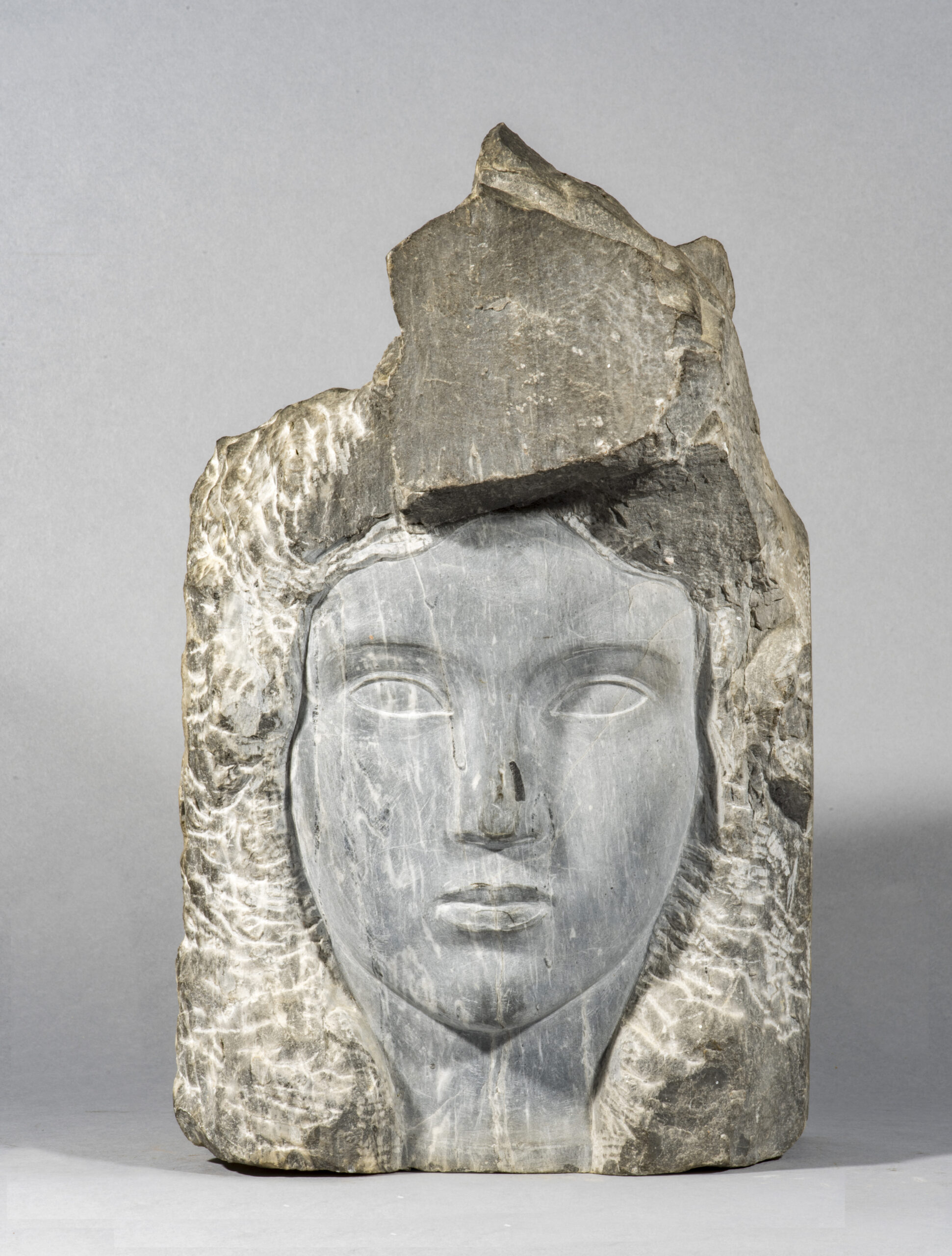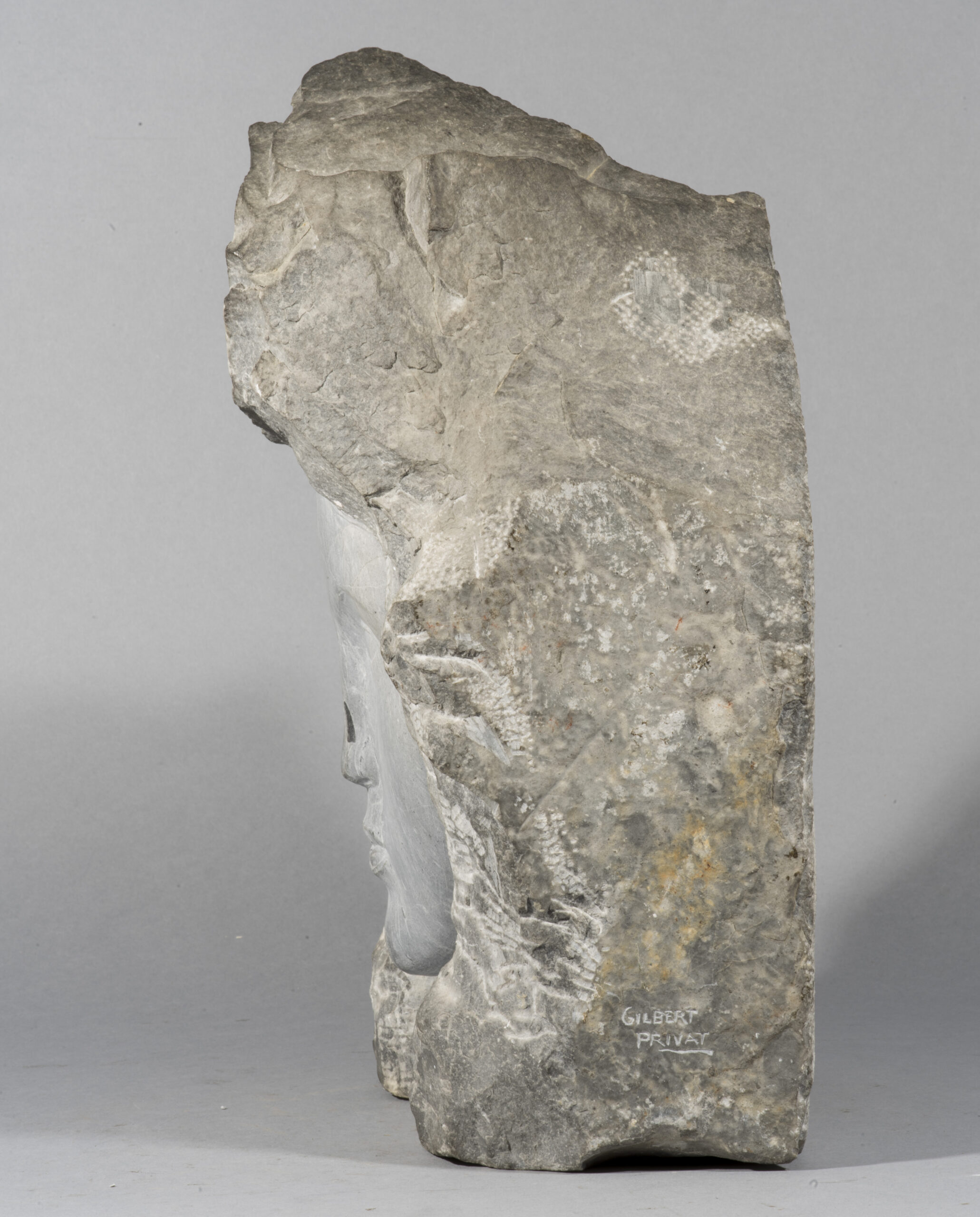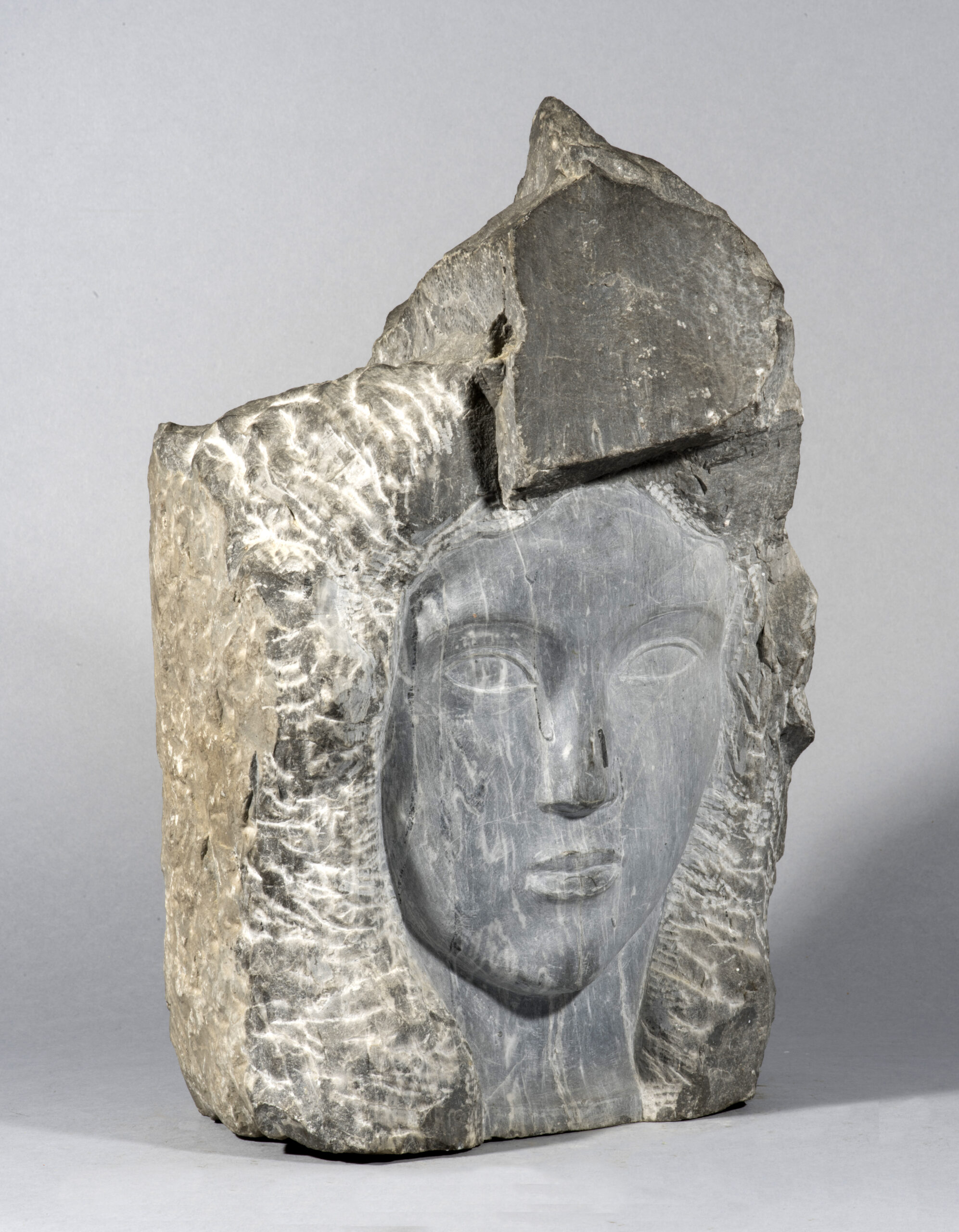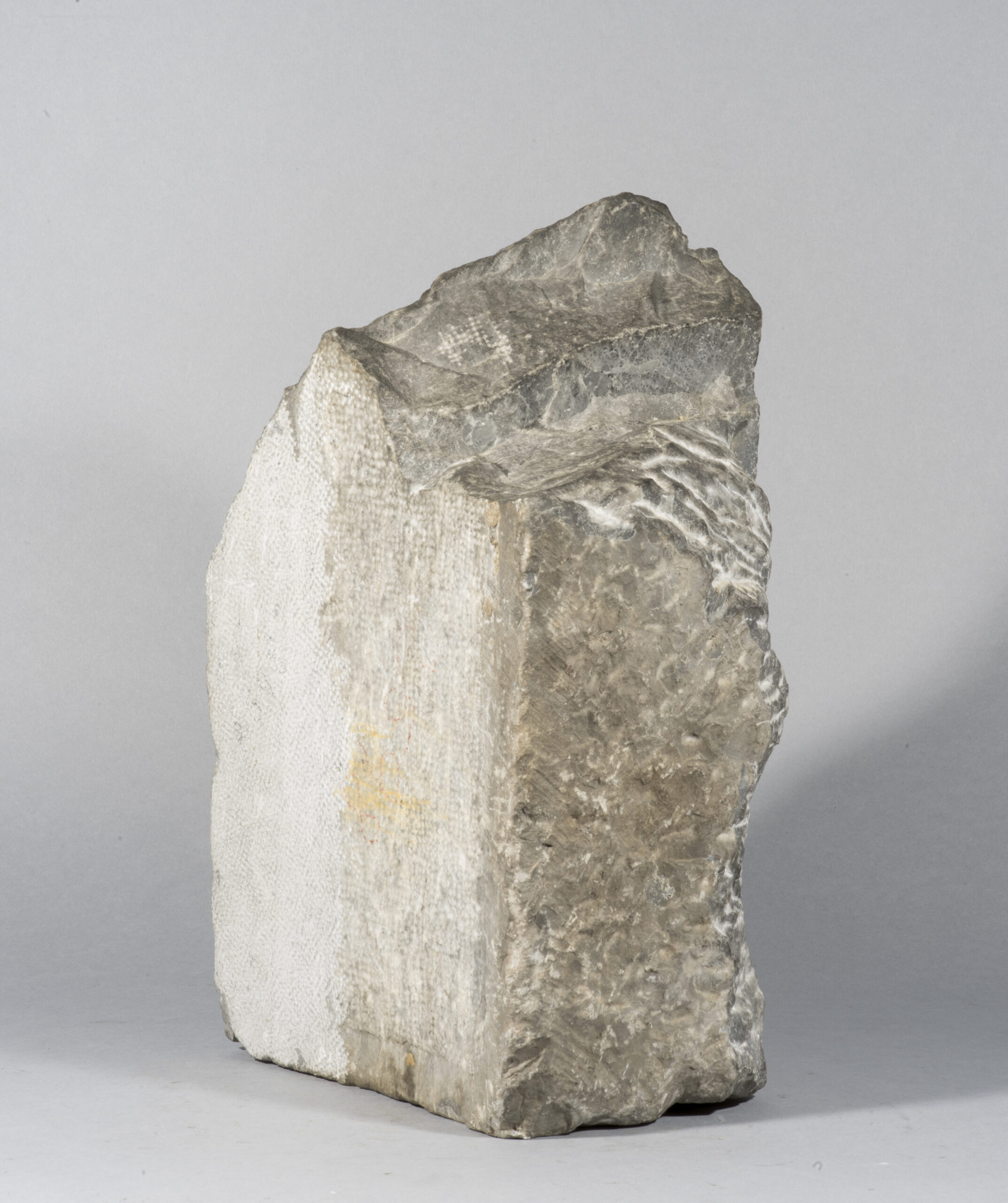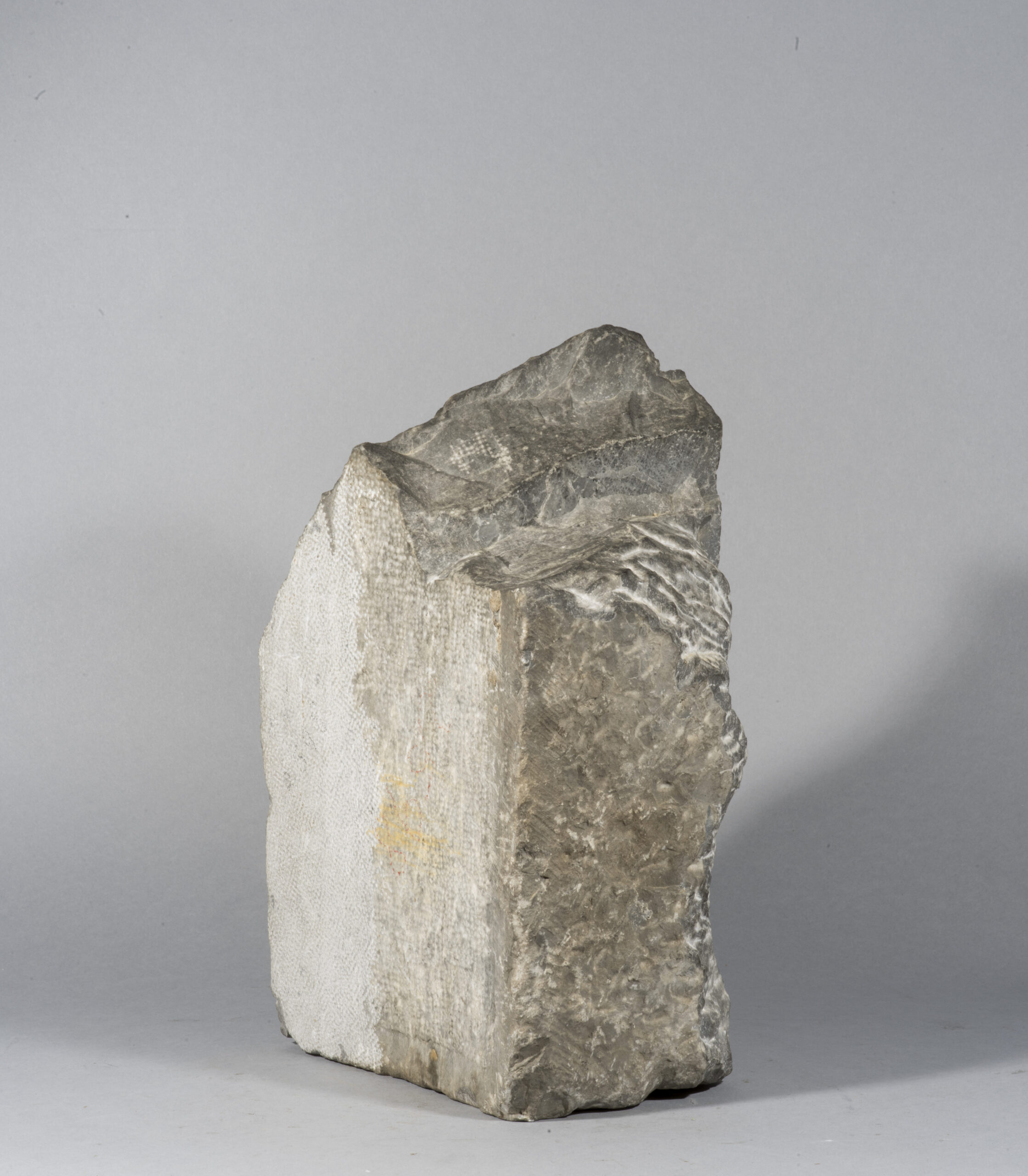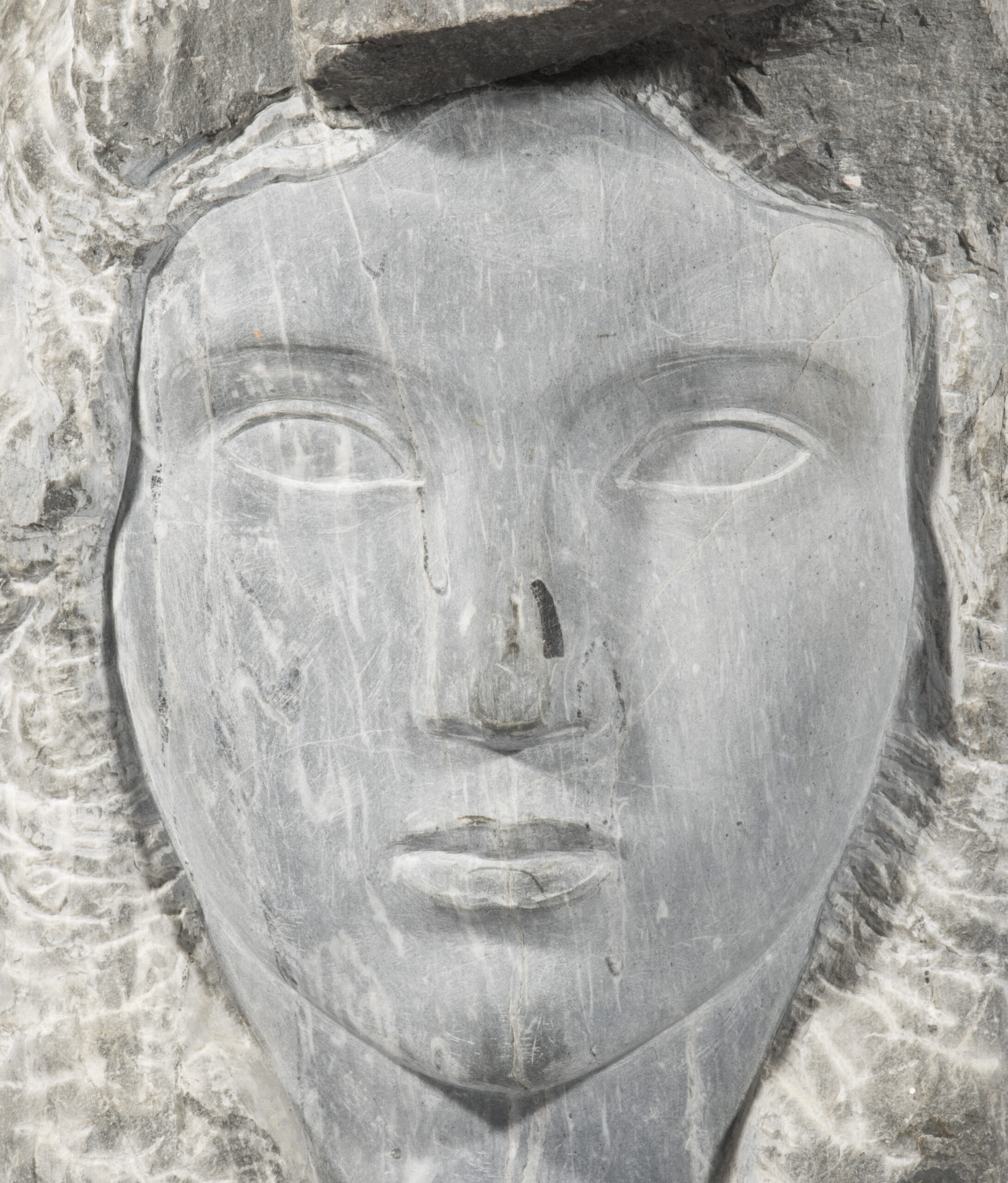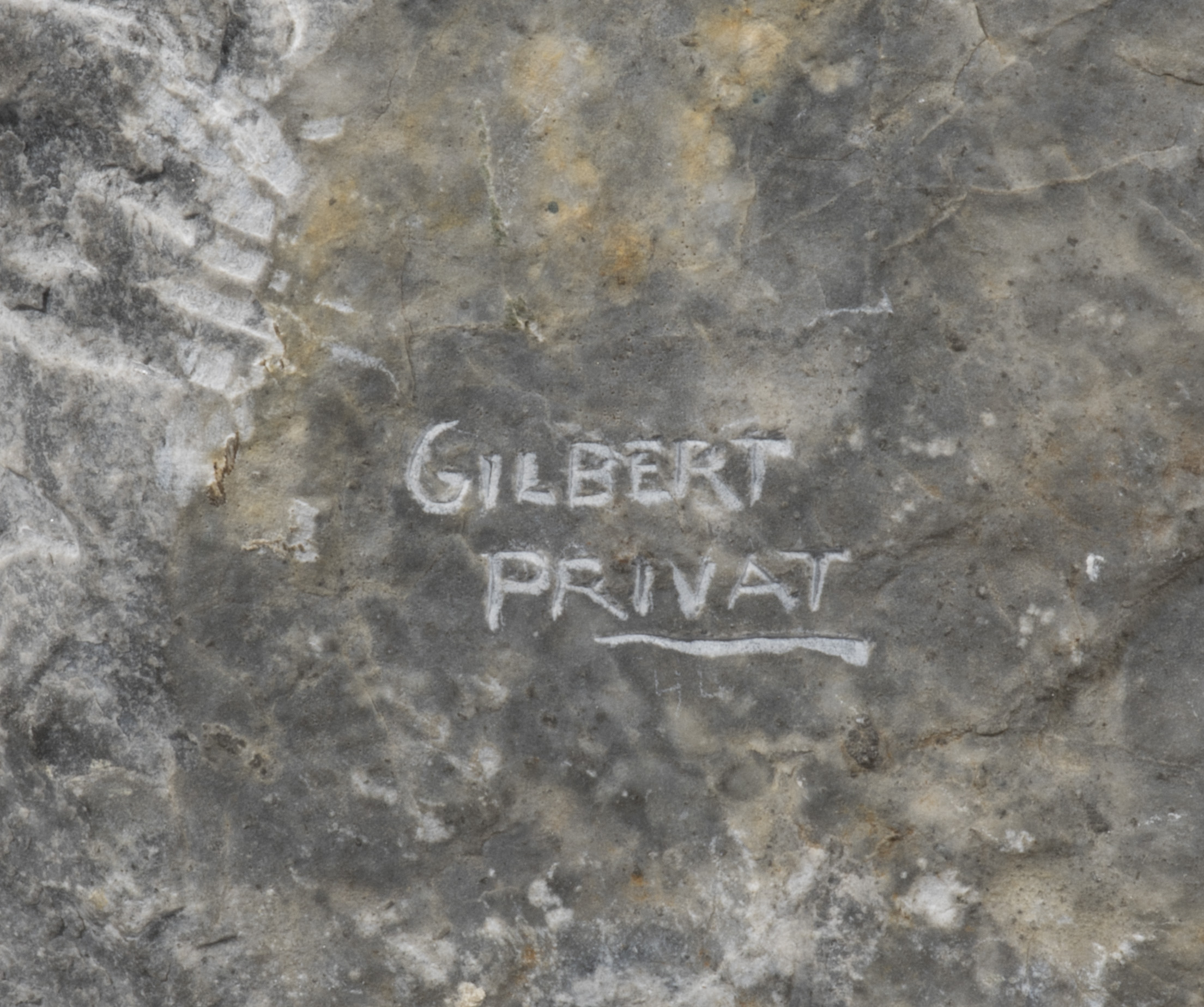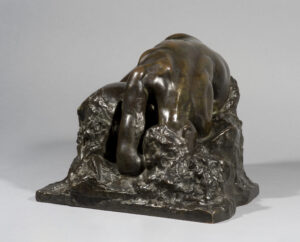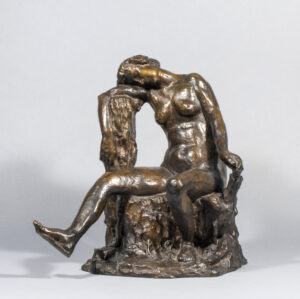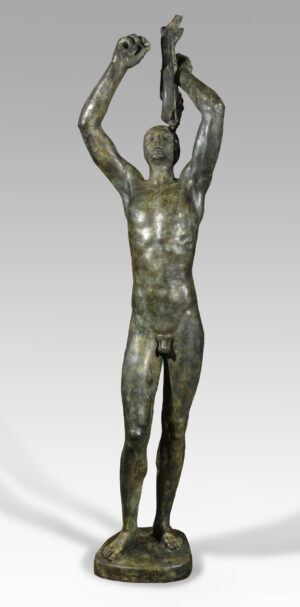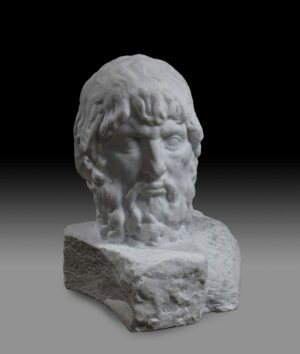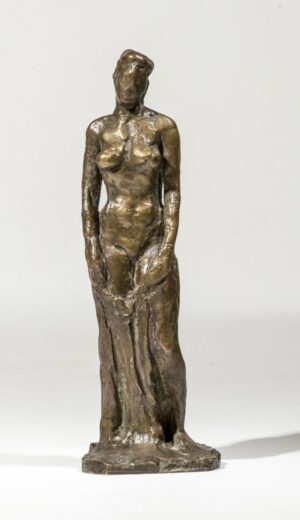Description
During the Occupation, Gilbert Privat was forced to stay in his native region, in Lourdes in particular. He took advantage of the situation to collect all the stone, marble and granite he could find, perfecting his direct carving technique. Each block, according to its shape or material, gave him the inspiration for his subject. Thus, from our block of grey Pyrenean marble, which appears to have been dressed to be fitted architecturally, a young woman’s head with gentle features and delicate modelling stands out on the face that has only been roughly squared. Like the sculptors of Romanesque capitals, Gilbert Privat adapted to the constraints of form to create this harmonious figure in low relief. He preferred this technique, as it allowed him to give the face greater expressive power, while maintaining restraint in its treatment. Gilbert Privat also admirably plays on the contrast between the pure, finely sculpted features and the barely roughed-out marble frame, which forms a voluminous, wavy head of hair. Constructed in the tradition of Bourdelle and Despiau, more like architecture than a trinket, this stone image projects both strength and serenity.
This sculpture is probably the one exhibited under the title Tête, with slate carvings at the Salon des Artistes décorateurs in 1945. In any case, it appeared at the Galerie Allard-Malesherbes exhibition in May 1946, as evidenced by a period photograph preserved at the Musée des années 30. The list of sculptures exhibited on this occasion reveals that Gilbert Privat named it Énigme. Was it because of its subject, the history of the material employed, its form? A wood piece with the same title and similarities in composition is kept at the Musée des Augustins in Toulouse.
Whatever the reason, the present sculpture is a unique piece that admirably combines balance and sensitivity.

